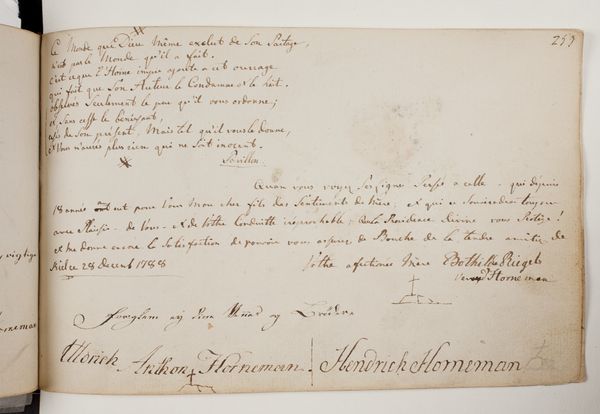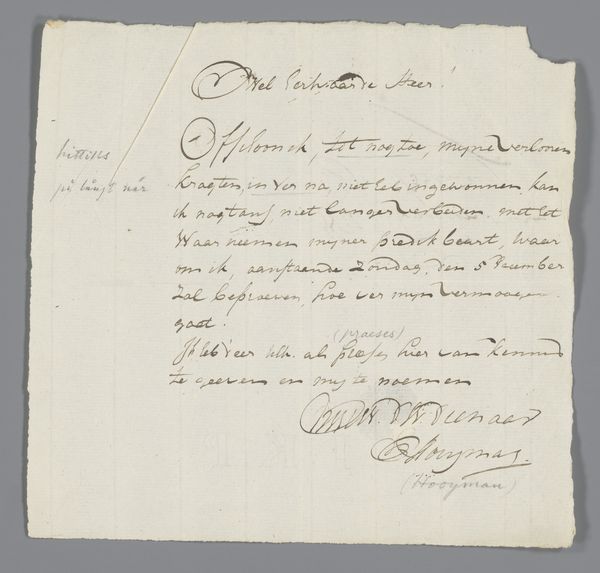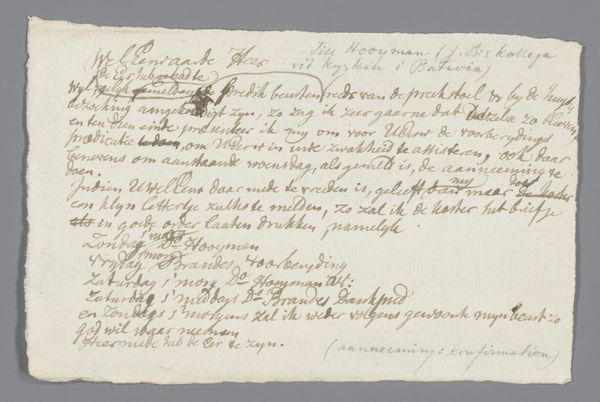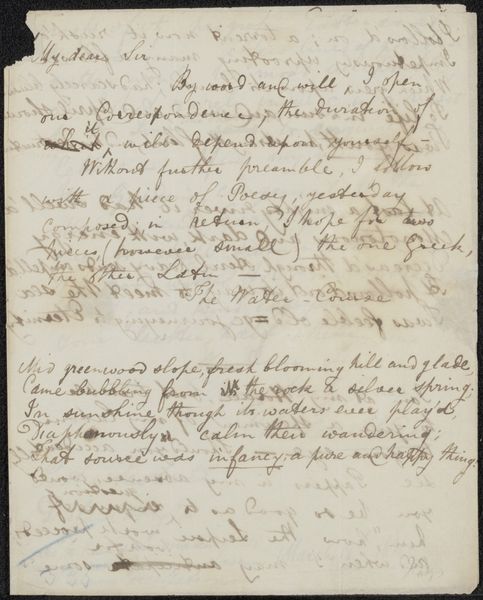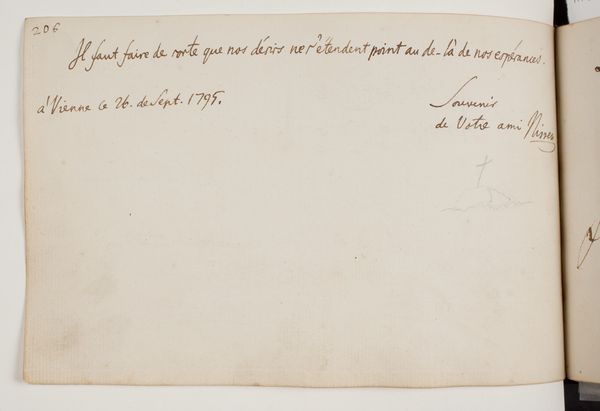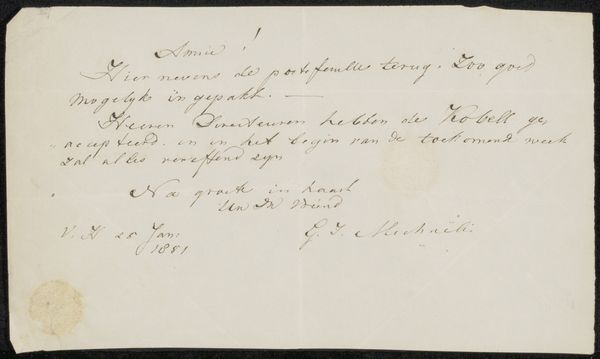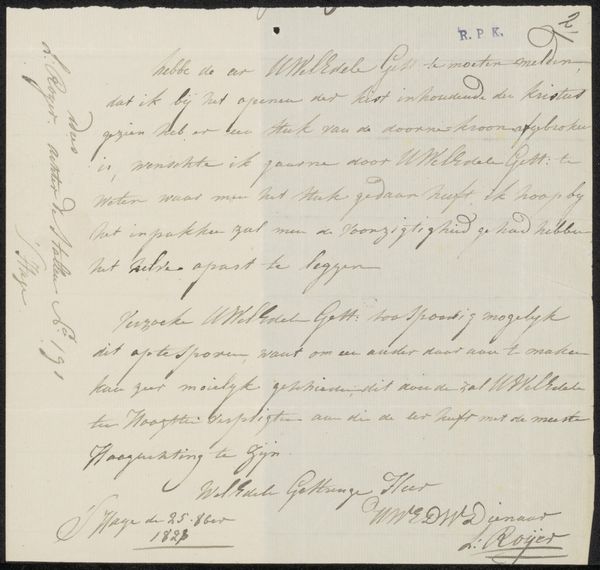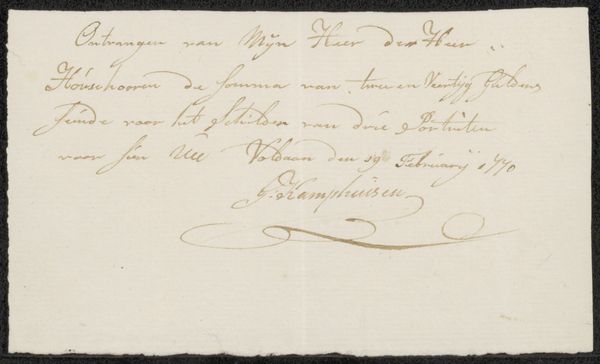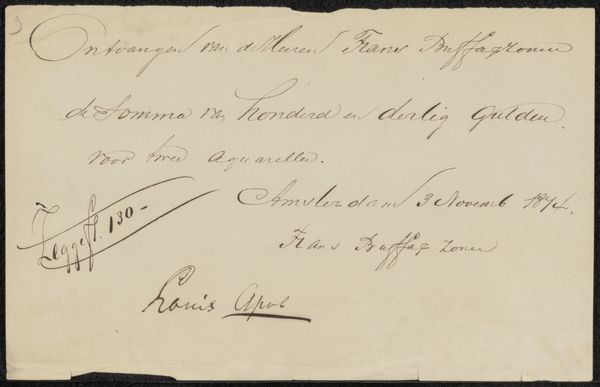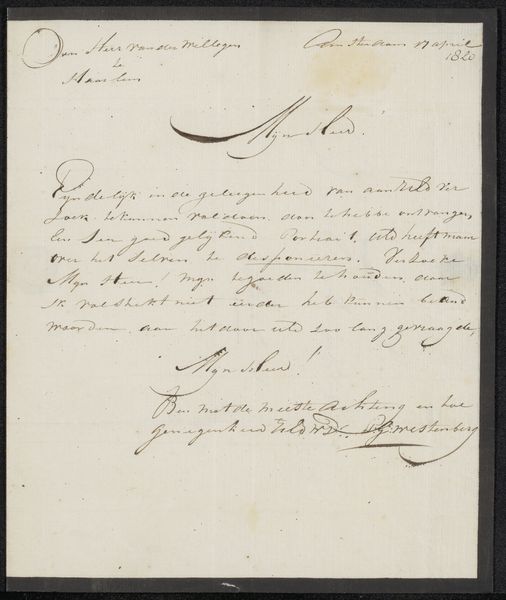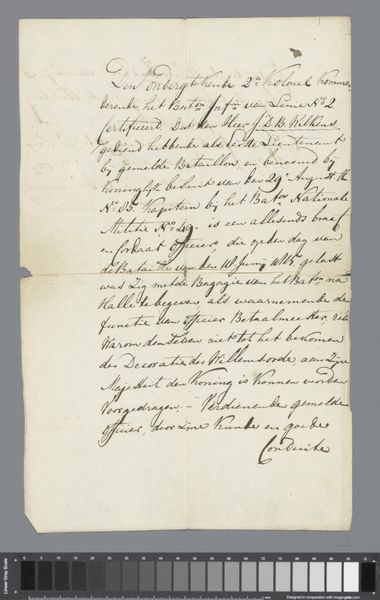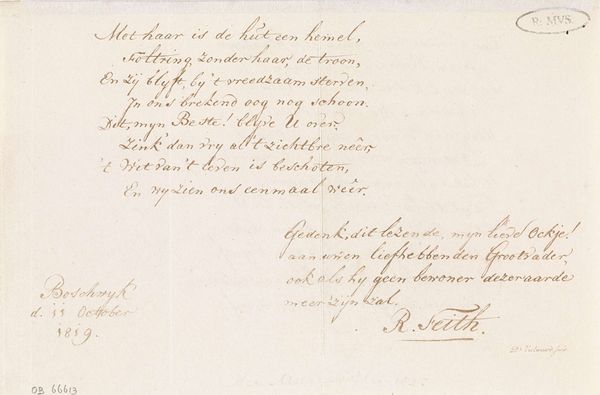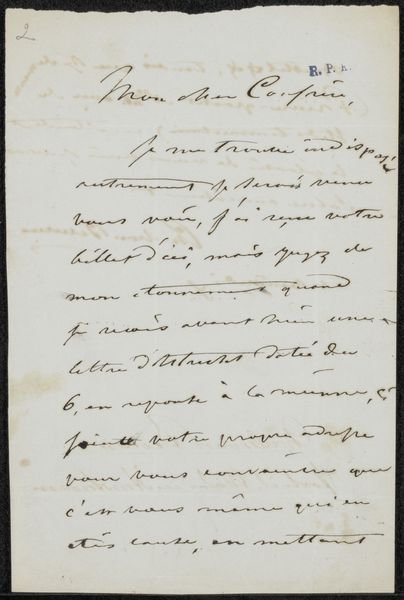
drawing, paper, ink
#
drawing
#
neoclacissism
#
paper
#
ink
#
watercolor
#
calligraphy
Dimensions: 137 mm (height) x 216 mm (width) (Bladmål)
Curator: This delicate drawing, "Vers og hilsen fra P.L. Giannelli," dating back to 1788, is rendered in ink on paper, displaying characteristics of Neoclassicism. What are your initial thoughts? Editor: It feels very personal, like a page from a journal or a letter. The calligraphy is beautiful, and the little landscape sketch at the bottom is charming, but I can’t quite grasp its meaning beyond that. How do you interpret this work? Curator: I see this as a fascinating glimpse into the world of late 18th-century artistic circles. Consider the context: Neoclassicism was a revival of classical antiquity. Now, knowing that, how might this drawing, ostensibly a simple poem and sketch, reflect the social and political values of the time? Editor: Well, Neoclassicism often embraced ideals of reason, order, and virtue... so maybe the poem is a reflection on those ideals? It’s a verse and greeting – maybe intended to express something deeper within those philosophical structures. Curator: Precisely. And look closely – Giannelli signs himself as a sculptor and a member of the Academy. Academies at that time played a crucial role in shaping artistic standards and reinforcing social hierarchies. Does this detail lead you to reconsider its purpose? Perhaps something beyond personal? Editor: Yes, it makes me wonder about the intended audience. Was it a gift to another academician? A statement of his own artistic credentials? I suppose that affects how we interpret it! Curator: Exactly. Recognizing this, we must question whether the "personal" feeling is intentional, carefully crafted to convey specific messages about status and artistic affiliation within his peer group. Even simple gestures, like sending poetry, were part of the discourse. Editor: I never considered how art like this could have functioned as social currency! It shows how artworks operate within, and are defined by, cultural spaces. Curator: It is a great example to understand how art serves beyond aesthetic and sentimental purposes, carrying messages of belonging, aspiration, and power in its own time.
Comments
No comments
Be the first to comment and join the conversation on the ultimate creative platform.
